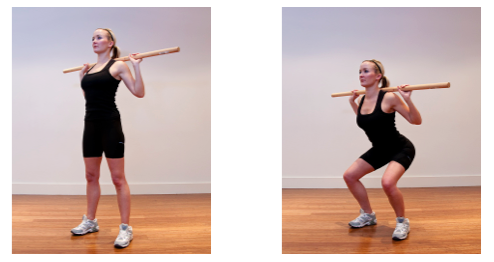Photo by Meiying Ng accessed from upsplash.com, edited by KT
(This is me actually setting an example!)...
Last year I suffered from an ongoing hamstring tendionpathy. It took it's time to get better and for the first time in my life I realised I am not invincible 😔 but that's ok! Here is a little sample of how to get back to exercise after taking a rest over the festive period, especially when you have a history of injury.
Taking a rest
I took 2 weeks off exercise over Xmas because I really needed a proper physical and mental rest. When I was a dancer, many many moons ago now, my teachers always said take 2 weeks of complete physical rest every year. I don't know where this comes from and I wouldn't say this particular criteria applies to everyone but I do it and I really feel the benefits. I get to a place where I have too much energy and I really feel the need to move and expend it. Then I know I've had enough rest and it's time to get going again.
First workout back
I always want to go running after not exercising for a while. I feel the need to "run out of" my laziness or restful state. However, from my past experiences with tendionpathies last year, I now know, and more importantly have accepted, that this is not a good idea.
My body needs to be reintroduced to exercise in a gentler way. So I started with a very modest body weight and Swiss ball workout. 6 exercises, 2 sets. I'd say it was 70% of max intensity. And 60% of my usual volume. Good joint mobilisation warmup and some specific stretching at the end.
I decided I did not want to feel exhausted at the end of my workout, or to be sore the next day. I just wanted to feel my body in movement again, and to feel ok with taking it easy.
Getting back to running
I went for my first run outside on Jan 1. I decided instead of running out of my rest state, I'd run into the new year! Usually I would bolt out of the gate and chase down any other runner on the road averaging 7-8k. Instead, I took the advice I give everyone I work with and I paced myself. I ran just 20 minutes, and took a minutes rest every 5 min. I kept a check on how my hamstring was doing. And it's doing just fine!
Onwards
My plan for the next 2 weeks is to get back to full intensity for my strength training and running a 5k three times per week.
I hope to achieve this within the next 21 days. I'll increase my total volume first, adding 3 workouts next week, 4 the following and back up to my usual 5 in the third week.
But the most important thing to state here is that I'll keep checking in to see how my body feels. If I am tired, I'll rest and get more sleep. If I feel I can push myself a bit more then I will. This is an absolutely crucial part of self-management of your health. Listen to your body - it will tell you what it wants to do on any given day. If your body doesn't speak yet, that's ok. I work with many people who have lost the conversation with their own body. You just need a bit of time, and you may need a bit of help tuning back in.
So if you are getting back to exercise after taking a break, ease into it and listen to your body to get back to your level over a few weeks to reduce the risk of injury for the start of 2017. If you're not sure you have a dialogue with your body and you need a bit of help with that then please do contact me at KT@precisionmovement.co.uk.
Wishing you all an AMAZING 2017... be the change you want to see.
Hugs and handstands!
KT


















